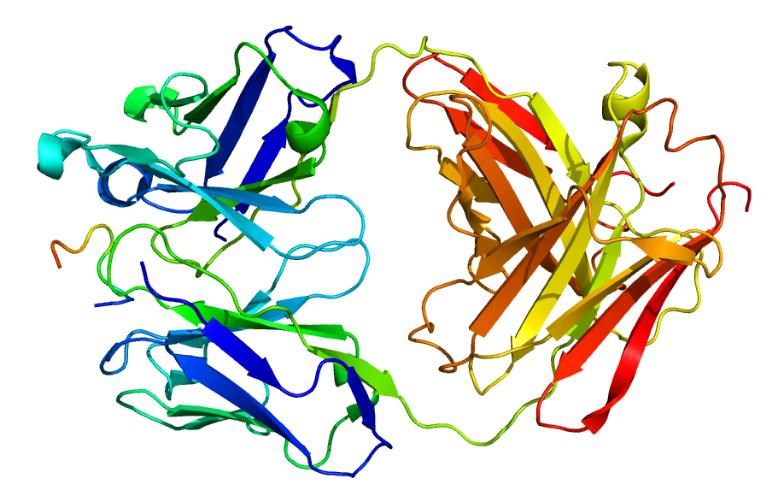Creative Biolabs is a leading service provider that focuses on polyclonal, monoclonal, and recombinant antibody development for research, diagnosis, and potential therapeutics. Based on our extensive experience and state-of-the-art platforms, Creative Biolabs now offers a series of biomarker-specific IVD (in vitro diagnostic) antibody development services to clients globally. Especially, we introduce our IVD antibody development services for osteopontin marker.
Osteopontin
Osteopontin (OPN), also known as secretory phosphoprotein 1 (SPP1) or early T-lymphocyte activation (ETA-1), is a protein encoded by the SPP1 gene in humans (secreted phosphoprotein 1). OPN is a negatively charged non-collagenous bone matrix glycoprotein. It is synthesized and secreted by a variety of tissue cells and is widely distributed in various tissues and cells, including bone, kidney, muscle, bladder and natural killer cells. Vascular endothelial cells, smooth muscle cells, various tumor cells and osteoblasts at different stages of maturation can all synthesize and secrete OPN molecules. In recent years, OPN has been used as a body-reactive protein in various organ systems.Gradually attracted people's attention. The relative molecular weight of OPN is about 44 kD, and it contains about 300 amino acid residues, of which aspartic acid, serine and glutamic acid residues account for a very high proportion. The interior of the molecule contains a special structure RGD (Arg-Gly-Asp) sequence, which is a unique structure in proteins that promote cell adhesion. The amino-terminal region of OPN molecule is related to exocrine and carboxy-terminal is involved in the regulation of adhesion function. It is an important inflammatory factor and oncogene, and it is highly expressed in various tumors including hepatocellular carcinoma.
 Fig. 1 The structure of osteopontin.
Fig. 1 The structure of osteopontin.
Osteopontin as Marker of Sepsis
Using cecal ligation and puncture (CLP)-induced septic rats and lipopolysaccharide (LPS)-treated pulmonary vein endothelial cells (VEC), the results showed that pulmonary vein vascular permeability and OPN expression in CLP rats and LPS-treated pulmonary veins VEC significant increase. This is due to the overexpression of Cx43 lentivirus which increases OPN expression and vascular permeability and down-regulates ZO-1 and Claudin-5 expression in pulmonary vein VECs. Suppression of OPN by OPN RNAi lentivirus suppressed down-regulation of ZO-1 and Claudin-5 in pulmonary vein VECs caused by Cx43 overexpressing lentivirus and high vascular permeability. Transfection of specific double-stranded RNA targeting β-catenin and T-cell factor-4 (Tcf-4) can abolish upregulation of OPN induced by Cx43 overexpression. These results indicate that Cx43 regulates vascular permeability following OPN involvement in sepsis. Cx43 up-regulates OPN through the Tcf-4/β-catenin transcription pathway. OPN increases vascular permeability by down-regulating the expression of tight junction proteins ZO-1 and Claudin-5.
IVD Antibody Development Services for Osteopontin Marker
Based on the rapid development of IVD technology and novel biomarkers, IVD antibodies are extensively used for disease screening and therapeutic monitoring. Diverse immunoassays are applied, including lateral flow assay, immunochemistry, sandwich ELISA, etc. Through our role as a leading antibody service provider, Creative Biolabs is well-positioned to deliver high-quality IVD antibody development services targeting numerous biomarkers of sepsis, such as osteopontin. We are confident that our commitment to science and research will enable us to offer you the best products and services.
If you are interested in our IVD antibody discovery services, please contact us for more details.
For Research Use Only.

